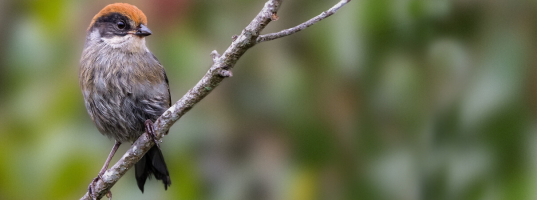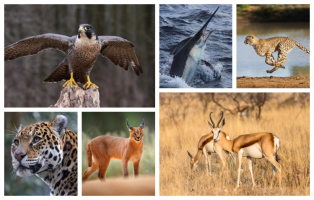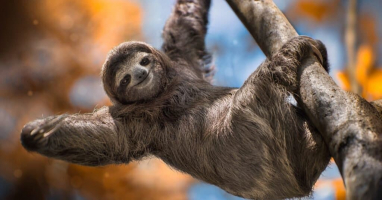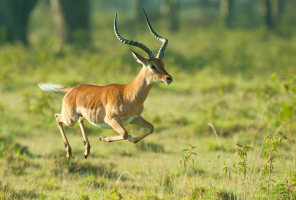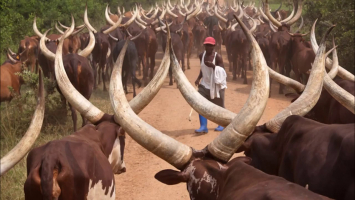Top 10 Rarest Animals In The World
The decline or disappearance of some local animal species is taking away the world's biodiversity. Although there have been many breeding programs and rare ... read more...animal conservation organizations, efforts have been made to prevent the extinction of many species. But human consciousness will make a great contribution in restoring this natural ecosystem. Let's take a look at the information about "Rarest Animals In The World" with Toplist
-
The Black-footed Ferret is an endangered animal that needs to be preserved, which has twice been in a near-extinction state. Originally, the Black-footed Ferret was native to the Great Plains of North America and lived mainly from southern Canada to northern Mexico. In 1979, The population of the Black-footed Ferret abruptly declined throughout the 20th century and was declared extinct. Then, it was listed as "extinct in the wild" in 1996 and downgraded back to "endangered" in the IUCN Red List in 2008.
Black-footed Ferret was later found back in 1981, since then, a captive breeding program was launched by the United States Fish and Wildlife Service and thousands of Black-footed Ferrets were re-released in Arizona, Wyoming, South Dakota, and Montana throughout the last few decades. The program has mostly been a success, recent updates only put the wild Black-footed Ferret population between 300 to 400 individuals.
Each black-footed ferret is roughly the size of a mink and is similar in appearance to the European polecat and the Asian steppe polecat. This animal is significantly nocturnal and solitary, except when breeding or raising a litter. Almost, up to 90% of its diet is composed of prairie dogs. In 2021, the first successful clone of a black-footed ferret, a female named Elizabeth Ann, was introduced to the public.Location: Arizona, Wyoming, South Dakota, and Montana, USA
Estimated Number of Mature Individuals: 300 to 400 in the wild
Current Conservation Status: Endangered
Scientific Name: Mustela nigripes
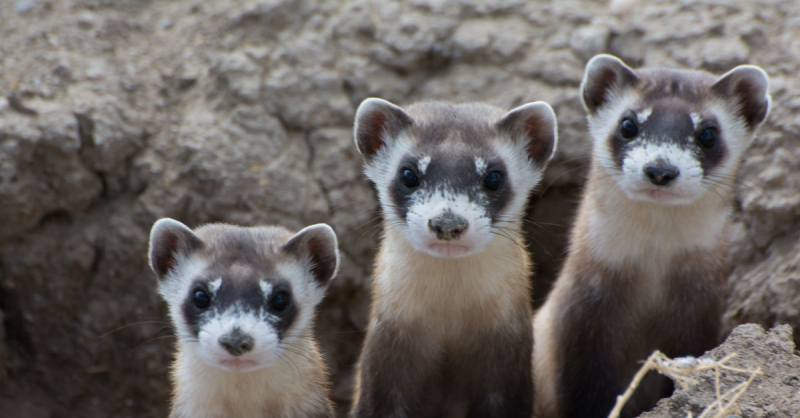
Source: Vox 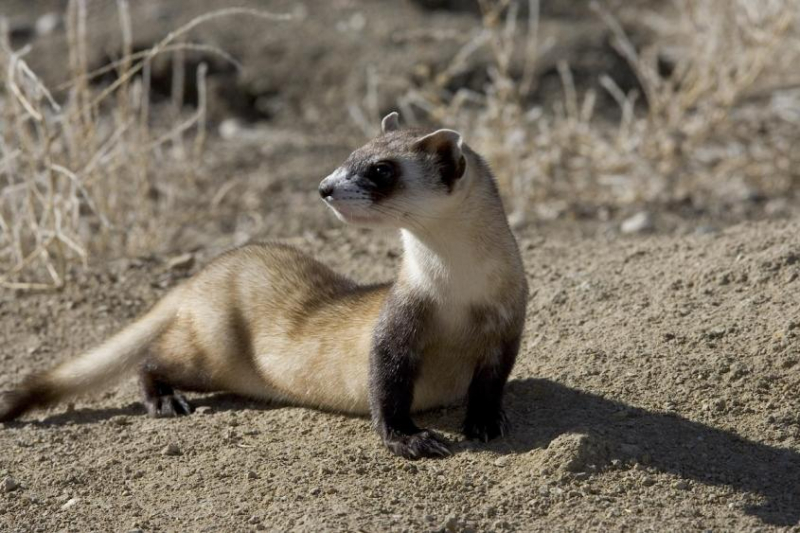
Source: Cornell University College of Veterinary Medicine -
The Addax, also known as white antelope, is on the verge of extinction in its wild habitat of the Sahara Desert, with the size of the wild population ranging from 30 to 90 mature individuals. The addax is a critically endangered species of antelope, as classified by the IUCN.
However, now this animal has been bred in several programs around the world. Therefore, it is extremely rare in the wild due to uncontrolled hunting and only lives in captivity to ensure safety.
Previously, the Addax lived in North Africa, and native to Chad, Mauritania, Niger, Algeria, Egypt, Libya, Sudan, and Western Sahara. The addax mainly eats grasses and leaves of any available shrubs, leguminous herbs, and bushes. The Addax form herds of five to 20 members, consisting of both males and females, and that are led by the oldest female. Due to its slow movements, the addax is an easy target for its predators: humans, lions, leopards, cheetahs, and African wild dogs. The inbreeding season is at its peak during winter and early spring. The natural habitat of the addax is arid regions, semi deserts, and sandy and stony deserts.Location: Sahara Desert
Estimated Number of Mature Individuals: between 30 to 90 in the wild (possibly as few as three); more than 2,000 in captivity
Current Conservation Status: Critically Endangered
Scientific Name: Addax nasomaculatus
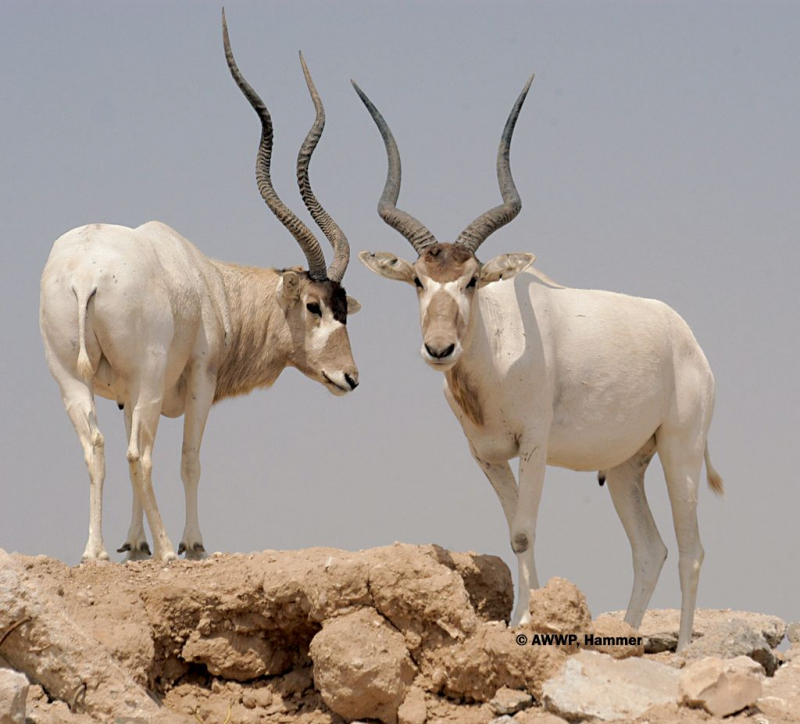
Source: Pinterest 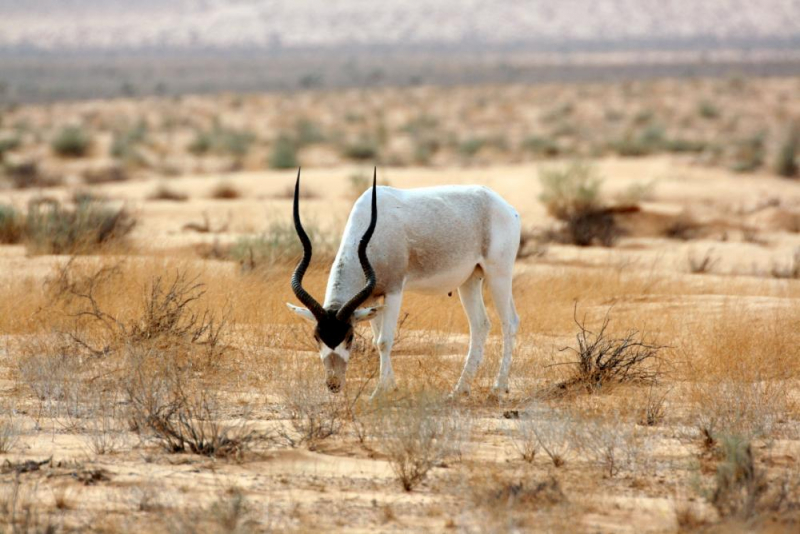
Source: International Union for Conservation of Nature - IUCN -
The Northern Bald Ibis is one of the rarest birds in the world, it has only about 250 mature individuals remaining in the wild. The Northern Bald Ibis has always been considered critically endangered, but thanks to successful conservation efforts over recent years have helped downgrade the species status to endangered. The reasons for the species' long-term decline are unclear, but hunting, loss of foraging habitat, and pesticide poisoning have been implicated in the rapid loss of colonies in recent decades. Currently, there are over 1,000 Northern Bald Ibises in captivity, in a semi-wild colony in Turkey, and locations in Austria, Italy, Spain, and northern Morocco.
The northern bald ibis, hermit ibis, or waldrapp is a migratory bird found in barren, semi-desert, or rocky habitats, often close to running water. This 70–80 cm, glossy black ibis, which, unlike many members of the ibis family, is non-wading, has an unfeathered red face and head, and a long, curved red bill. It breeds colonially on coastal or mountain cliff ledges, where it typically lays two to three eggs in a stick nest and feeds on lizards, insects, and other small animals. The Northern Bald Ibis has been regionally extinct in Europe for over 500 years, but breeding and conservation programs have brought it back.Location: Southern Morocco and Syria; previously also found throughout Europe, North Africa, and other parts of the Middle East
Estimated Number of Mature Individuals: less than 250 in the wild; over 1,000 in captivity
Current Conservation Status: Endangered
Scientific Name: Geronticus eremita
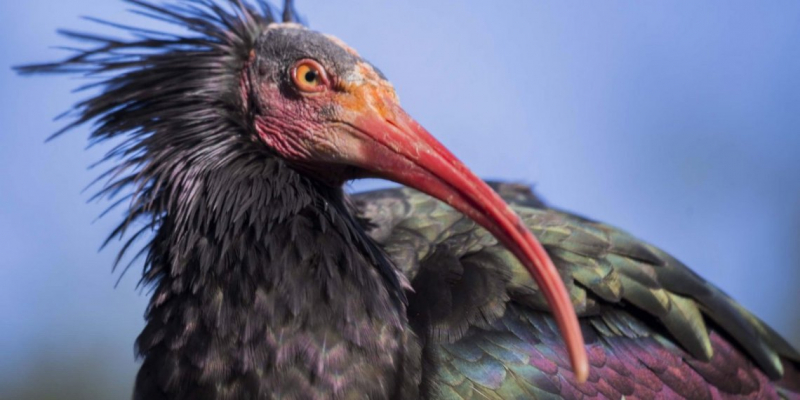
Source: Society for the Protection of Nature in Lebanon 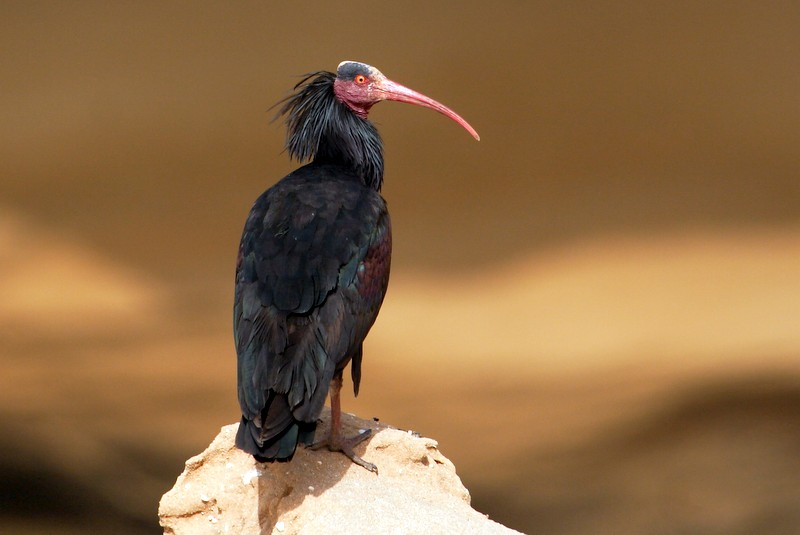
Source: Rockjumper Birding Tours -
The Cross River Gorilla is one of the most endangered great apes in the world. Today, it is estimated that there are less than 250 Cross River Gorillas in the wild and only one known to be in captivity. The biggest threat to the survival of the Cross River Gorilla is habitat loss due to human activities. Also, the Cross River Gorilla is threatened by bushmeat hunting by locals. Due to the hunting, Cross River Gorillas are very scared of humans and are very rarely observed.
The Cross River gorilla is a Critically Endangered subspecies of the western gorilla. It was named a new species in 1904 by Paul Matschie, a mammalian taxonomist working at the Humboldt University Zoological Museum in Berlin. The Cross River gorilla is the most western and northern form of a gorilla and is restricted to the forested hills and mountains of the Cameroon-Nigeria border region at the headwaters of the Cross River (Nigeria).
In 2009, the Cross River gorilla was first captured on professional video on a forested mountain in Cameroon. Estimates, as of 2014 suggested that fewer than 250 mature Cross River gorillas remain, making them the world's rarest great ape. Groups of these gorillas concentrate their activities in 11 localities across a 12,000 km2 (4,600 sq mi) range, though recent field surveys confirmed the presence of gorillas outside of their known localities suggest a wider distribution within this range.Location: Forested hills and mountains of the Cameroon-Nigeria border region at the headwaters of the Cross River (Nigeria)
Estimated Number of Mature Individuals: less than 250 in the wild; one known in captivity
Current Conservation Status: Critically Endangered
Scientific Name: Gorilla gorilla diehli
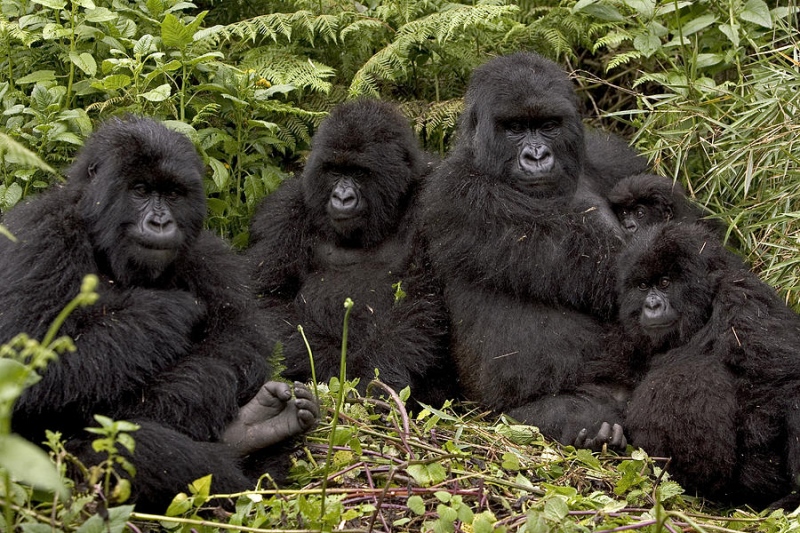
Source: Volcanoes National Park 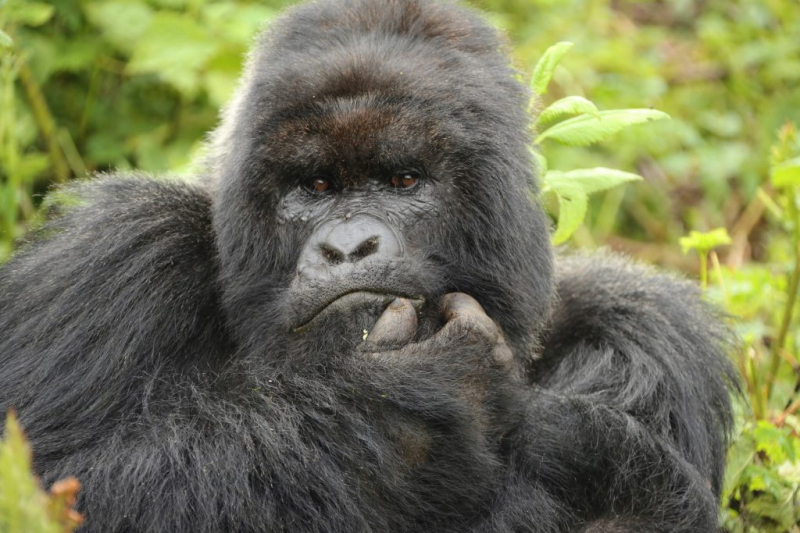
Source: The gorilla safari company -
Saola has the scientific name of Pseudoryx Nghetinhensis, also known as the Asian Unicorn, which is one of the rarest mammals in the world living in the Truong Son mountains in Vietnam and Laos. discovered in 1992. Saola is classified as Endangered (endangered in the wild) in the Red Book of the World Conservation Union (IUCN) and the Red Book of Vietnam.
However, so little is known about the Saola that there is no real data on the elusive animal's current population. Because the Saola has only been seen in the wild a handful of times since its remains were first discovered in 1992, population estimates vary wildly from as little as 25 individuals to as many as 750. However, researchers believe that the Saola population is much lower, and most likely less than 250.
Researchers have tried to keep Saola in captivity a few times, but each of these captive Saolas eventually died. This has led conservationists to believe that Saola cannot survive captivity and thus a breeding program can't be established. Most of the information known about the Saola comes from William G. Robichaud, who managed to keep a female Saola in captivity for about 15 days before she died of unknown causes. According to Robichaud's observations, the Saola was not afraid of humans, only dogs.Location: Annamite Range of Vietnam and Laos
Estimated Number of Mature Individuals: population estimates range from 25 to 700, but believed to be actually fewer than 250
Current Conservation Status: Critically Endangered
Scientific Name: Pseudoryx nghetinhensis
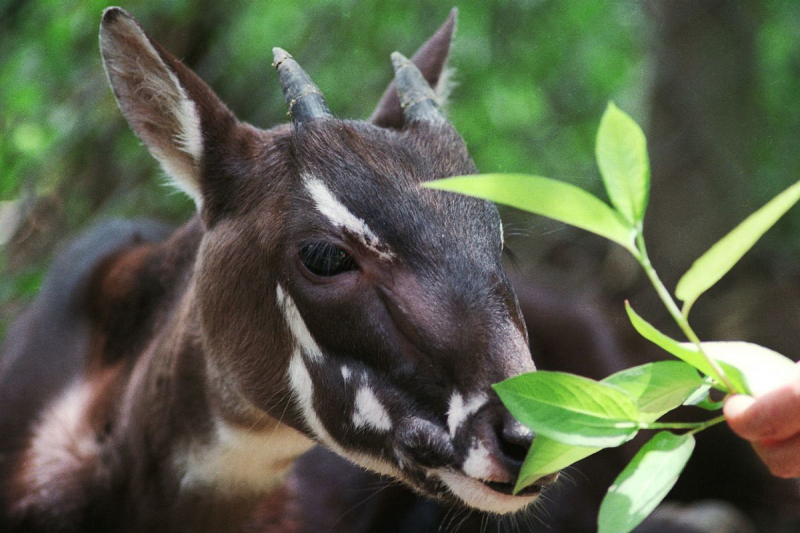
Source: Vietnamnet 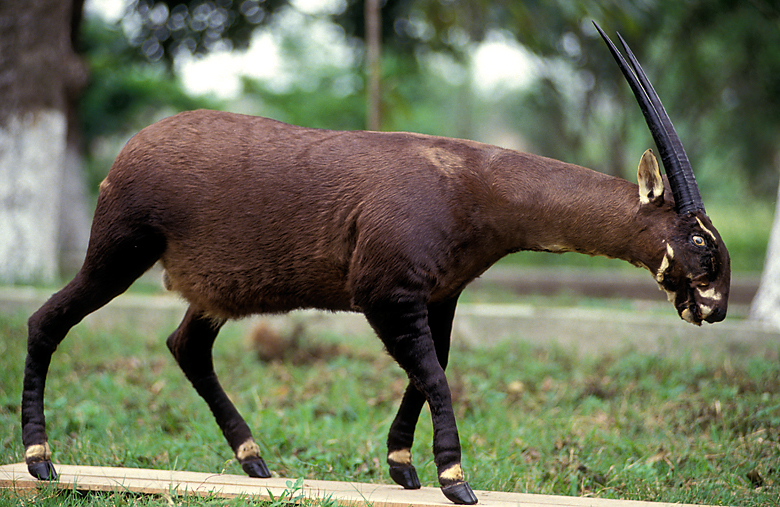
Source: Việt Nam Forestry -
One of the rarest and most endangered in the world is the Amur Leopard. It is estimated that this animal is less than 100 individuals (about 84 to be more exact) left in the wild. Amur Leopards mostly reside in the Amur River basin of eastern Russia with a few scattered in the northern part of China.
Amur Leopards have relatively long lifespans, living for about 10 to 15 years in the wild and 20+ years in captivity. Like all the animals on this list, the Amur Leopard population faces many threats, including habitat destruction, illegal poaching, conflicts with humans, and a lack of genetic variation. Since there are so few Amur Leopards left, there is a lot of inbreeding, which results in weaker offspring. The rosettes or spots on Amur Leopards are larger, more widely spaced, and have thicker black borders than those found on the other species of leopards.
The Amur leopard is a leopard subspecies native to the Primorye region of southeastern Russia and northern China. It is listed as Critically Endangered on the IUCN Red List as in 2007 when only 19–26 wild leopards were estimated to survive in southeastern Russia and northeastern China. In 2021, The Amur leopard was reported the population was about 110 individuals.Location: Primorye region of southeastern Russia and northern China
Estimated Number of Mature Individuals: less than 100 in the wild; about 170 to 180 in captivity
Current Conservation Status: Critically Endangered
Scientific Name: Panthera pardus orientalis
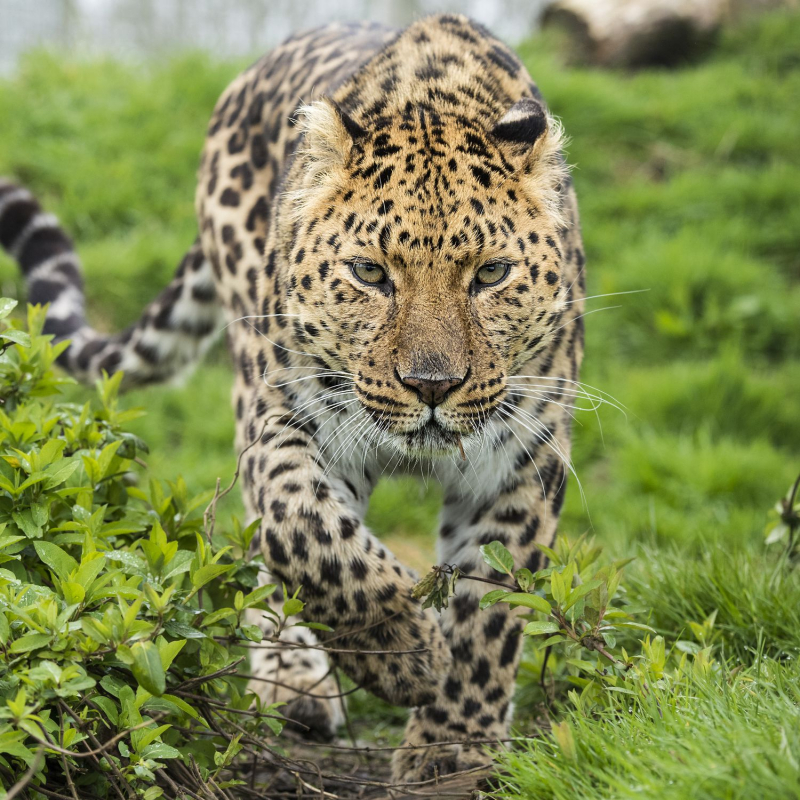
Source: Treehugger 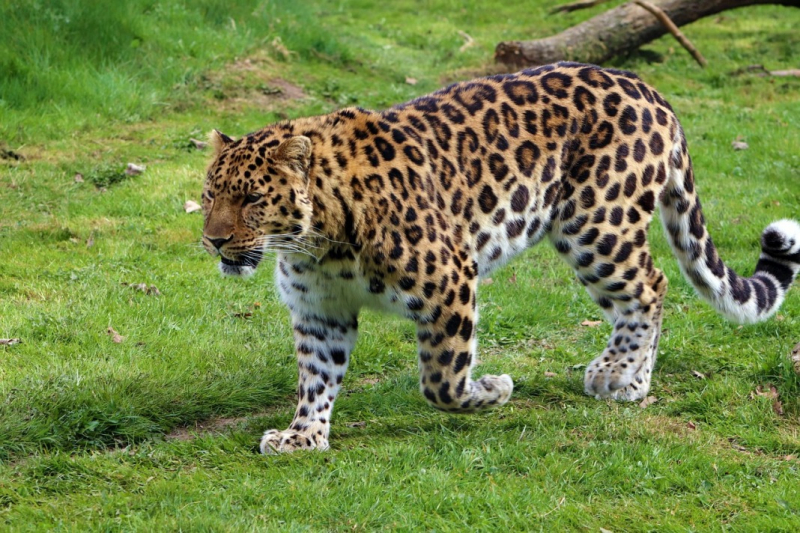
Source: Wildscapia.com -
The Philippine crocodile, also known as the Mindoro crocodile, the Philippine freshwater crocodile, the bukarot in Ilocano. The Philippine crocodile is the species endemic only to the country, it was updated to critically endangered in 2008 after a long period of distrust, the cause of this extinction is exploitation and unsustainable fishing methods, such as dynamite fishing. So, Conservation methods have been taken by the Dutch/Filipino Mabuwaya foundation, the Crocodile Conservation Society, and the Zoological Institute of HerpaWorld in Mindoro island.
The Philippine Crocodile is considered to be the most threatened crocodile species in the world, with fewer than 100 left in the wild and very few in captivity. Previously, the Philippine Crocodile was found all across the island nation, but currently only found in small, fragmented habitats on the islands of Dalupiri, Luzon, and Mindanao. The Philippine Crocodile population has been seriously affected by hunting and habitat destruction. Another cause is public perception. When the crocodiles have been labeled as animal man killers, so it by the local populace and have been killed for this negative view. However, in recent years, conservationists have been working to change public perception and have successfully bred and released Philippine Crocodiles into protected habitat sites.Location: fragmented habitats on the islands of Dalupiri, Luzon and Mindanao in the Philippines
Estimated Number of Mature Individuals: less than 100 in the wild; very few in captivity
Current Conservation Status: Critically Endangered
Scientific Name: Crocodylus mindorensis
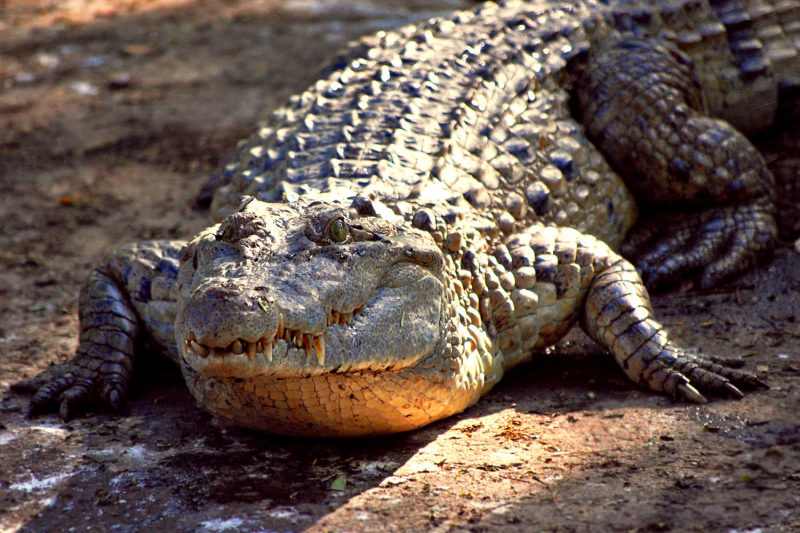
Source: Wikipedia 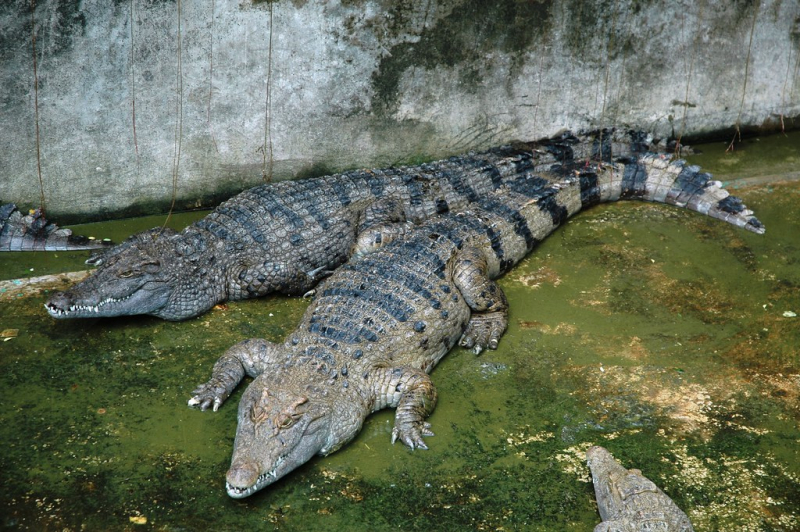
Source: Flickr -
The Sumatran Rhino is also known as the Asian Two-horned Rhino, this is the rarest of the five remaining species of rhinoceros. Scientists estimate that there are fewer than 100 Sumatran Rhinos in the wild. However, according to the World Wildlife Fund, The Sumatran Rhino numbers only around 30. It is believed that the Sumatran Rhinos have been a fairly vulnerable species for the past 9,000 years when a climate shift took place in their natural habitat.
Since then, Sumatran Rhinos have failed to bounce back and face even more threats today. While there has been some success with breeding Sumatran Rhinos in captivity, this animal has a hard time surviving outside of its natural ecosystem. So currently, they are very rare in captivity.
The Sumatran Rhino, also known as the hairy rhinoceros or Asian two-horned rhinoceros, is a rare member of the family Rhinocerotidae and is the only extant species of the genus Dicerorhinus. Members of the species once inhabited rainforests, swamps, and cloud forests in India, Bhutan, Bangladesh, Myanmar, Laos, Thailand, Malaysia, Indonesia, and China. In the past, this animal lived in southwest China, particularly in Sichuan. The Sumatran rhinoceros are now critically endangered, with only five substantial populations in the wild: four in Sumatra and one in Borneo. Their numbers are difficult to determine because they are solitary animals that are spread across their range.Location: Sumatra and Borneo (used to be found in India, Bhutan, Bangladesh, Myanmar, Laos, Thailand, Malaysia, other parts of Indonesia, and China
Estimated Number of Mature Individuals: less than 100 in the wild; very few in captivity
Current Conservation Status: Critically Endangered
Scientific Name: Dicerorhinus sumatrensis
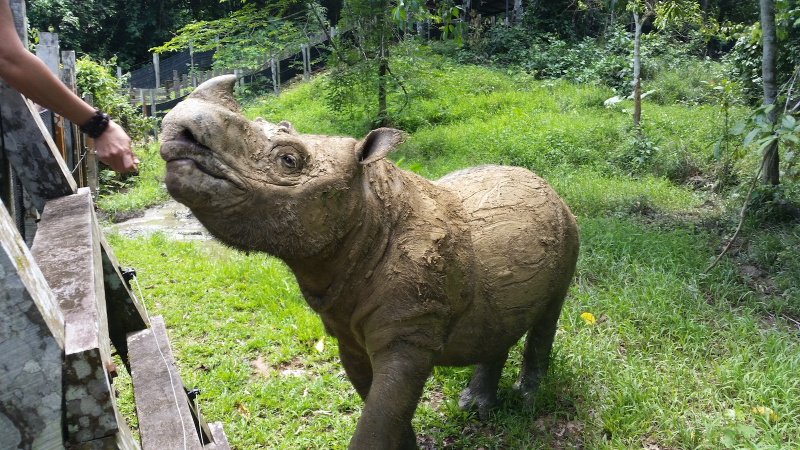
Source: Live Science 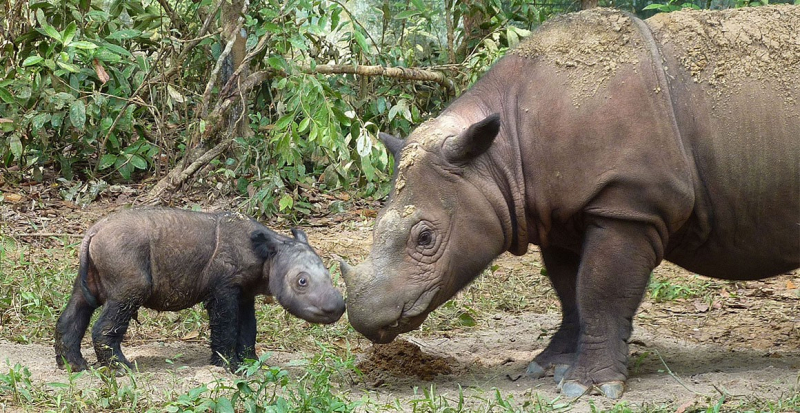
Source: Natural History Museum -
The South China tiger is a population of the Panthera tigris subspecies that is native to southern China. The population of it mainly inhabited the Fujian, Guangdong, Hunan, and Jiangxi provinces. The South China tiger has been listed as Critically Endangered on the IUCN Red List since 1996 and is possibly extinct in the wild since no wild individual has been recorded since the late 1980s. In the late 1990s, continued survival was considered unlikely because of low prey density, habitat degradation and fragmentation, and other human pressures.
The South China Tiger is also known as the Amoy tiger, South Chinese, Chinese and Xiamen tiger, is one of the most threatening tiger species in the world. Scientists have declared that the South China Tiger is functionally extinct in the wild and has not been seen outside of captivity in more than 25 years. Until 2007, the first South China Tiger was born outside of China at the private reserve known as Laohu Valley Reserve in South Africa. More tigers have been born in Laohu Valley since then. Although, there are still rumors that the South China Tigers in captivity have been crossed with other species.Location: Southern China
Estimated Number of Mature Individuals: believed to be extinct in the wild; less than 100 in captivity
Current Conservation Status: Critically Endangered
Scientific Name: Panthera tigris tigri
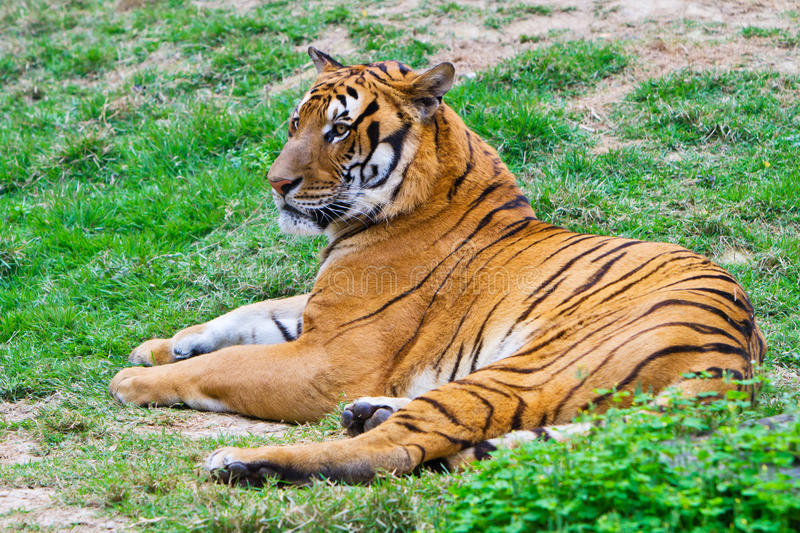
Source: Dreamstime.com 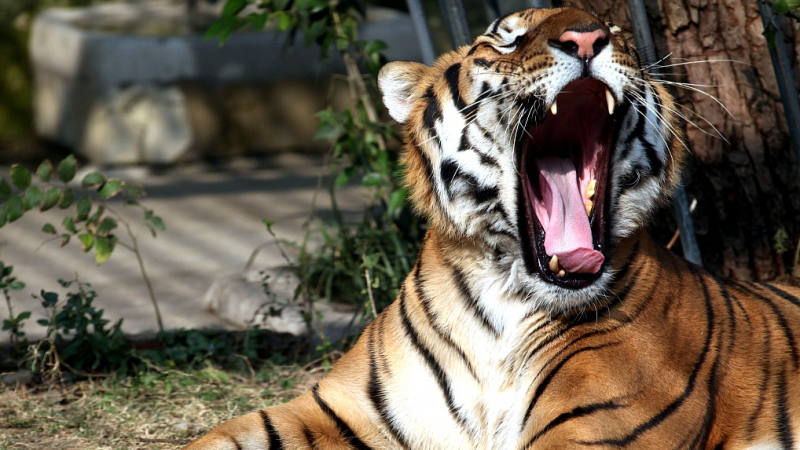
Source: CGTN -
The vaquita is considered a species of porpoise endemic to the northern end of the Gulf of California in Baja California, Mexico. It has averaged 150 cm for females or 140 cm for males in length, so far it has been listed as the smallest of all living cetaceans. The vaquita is currently on the brink of extinction and is currently listed as Critically Endangered by the IUCN Red List with the steep decline in abundance being preeminent, mainly due to bycatch in gillnets from the illegal fishery.
The Vaquita is currently the rarest animal in the world, and quite possibly the most endangered, with only about 10 individuals left in the wild. That estimate comes from a report published by the IUCN in early 2019 that stated that only about 10 vaquitas are still alive. But as per an acoustic monitoring program practiced in the Gulf, The Vaquita has a 95% chance of remaining 6 to 22 individuals in the wild. Unfortunately, there are no Vaquita in captivity and there is currently no successful breeding program to help bring their numbers back up.Location: Northern part of the Gulf of California
Estimated Number of Mature Individuals: about 10 in the wild (possibly between 6 and 22)
Current Conservation Status: Critically Endangered
Scientific Name: Phocoena sinus
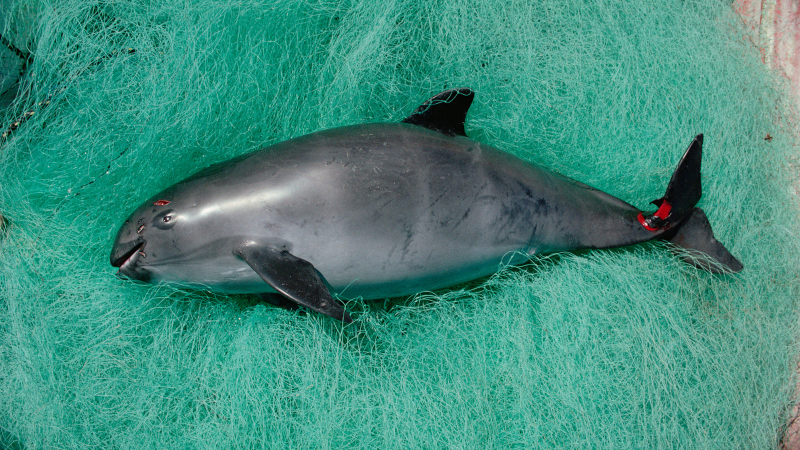
Source: The New York Times 
Source: Wild For Life












